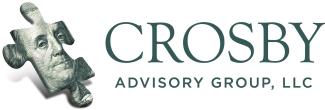
7 Moves to Make in 2024: #5 Plan for Higher Taxes
7 Moves to Make in 2024: Move #5 Plan for Higher Taxes
As a nation, we have made a lot of promises that will require adjustments to keep. According to SSA.gov, the official Social Security website, the Social Security Trust Fund is projected to be exhausted by 2037. The Medicare Board of Trustees projects insufficient resources to pay for Medicare sooner than that. This does not mean these programs will go away, it just means Congress will be forced to make changes to either the benefits those programs provide, or the way those programs are funded, possibly both.
America’s national debt now exceeds its gross domestic product. In 1981, our debt to GDP ratio was only 32%. In 2023, it was 129% The interest that we pay on the debt is also at an all-time high (see chart below).

I don’t know what tax rates will be in 10 years, but for our clients, we are planning on taxes being higher and benefits reduced. If we are wrong, our client's position is still financially strong with the ability to withdraw money efficiently in retirement years. With social benefits underfunded and debt obligations high, we believe there could be substantial risk of higher taxes in the future.
What can you do to protect yourself from future tax increases?
Be careful how much of your investments are pre-tax or tax deductible. Tax deferred investments are powerful for helping reduce current taxation; however, if all your assets will be taxed at ordinary income rates in retirement, you may lose the ability to control your tax bracket.
Take Advantage of Roth Options: Most 401k plans today allow for a Roth option, which are contributed with after tax money, thus can be withdrawn tax-free. For those whose employer does not offer a 401k Roth option, Roth IRAs are a great way to accumulate tax-free assets. One drawback to a Roth IRA is they have contribution limitations for high income earners. A legal way to get around those limitations is through what is called a “Back Door Roth,” which entails contributing to a traditional IRA, then immediately converting it to a Roth IRA. If you are a high-income earner, ask your advisor if a Back Door Roth is right for you.
Municipal Bonds: High income earners can also benefit from tax-free interest generated by municipal bonds. Interest from municipal bonds are federal tax-free and can be state tax-free as well if you purchase a bond from your resident state. It is very important to understand the credit quality of the municipal bond you are purchasing.
Cash Value Life Insurance: Permanent life insurance that offers cash value accumulation is another way to accumulate cash and dividends that can be withdrawn tax-free with the help of a knowledgeable advisor. Participating whole life provides policy owners with the benefit of receiving tax-free dividends, while indexed universal life can offer the potential for faster accumulation of cash value compared to traditional permanent life policies.
As a general rule we like clients to have a combination of taxable, deferred, and tax-free investments. This does not mean they have to all be in equal balance, but having the ability to choose how your withdrawals are taxed puts you in charge of the extent to which you are taxed.
Questions?
- Carly Snyder to discuss marketing and business growth strategies
- Nate Crosby or Derek Ballinger on investments and planning
- Macy Vogel regarding life insurance and annuities
- Julie Maglott regarding home and auto insurance
Disclaimer: This newsletter is for informational purposes and does not represent individual investment advice. Crosby Advisory Group, LLC provides investment planning and business growth strategies. NMD Insurance is the name of our insurance agency. Crosby Advisory Group, LLC is a registered investment advisor. Investing involves risk including the potential loss of principal. Not all investments are suitable for all people.

